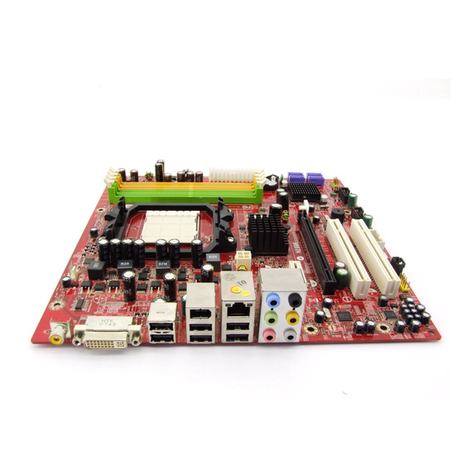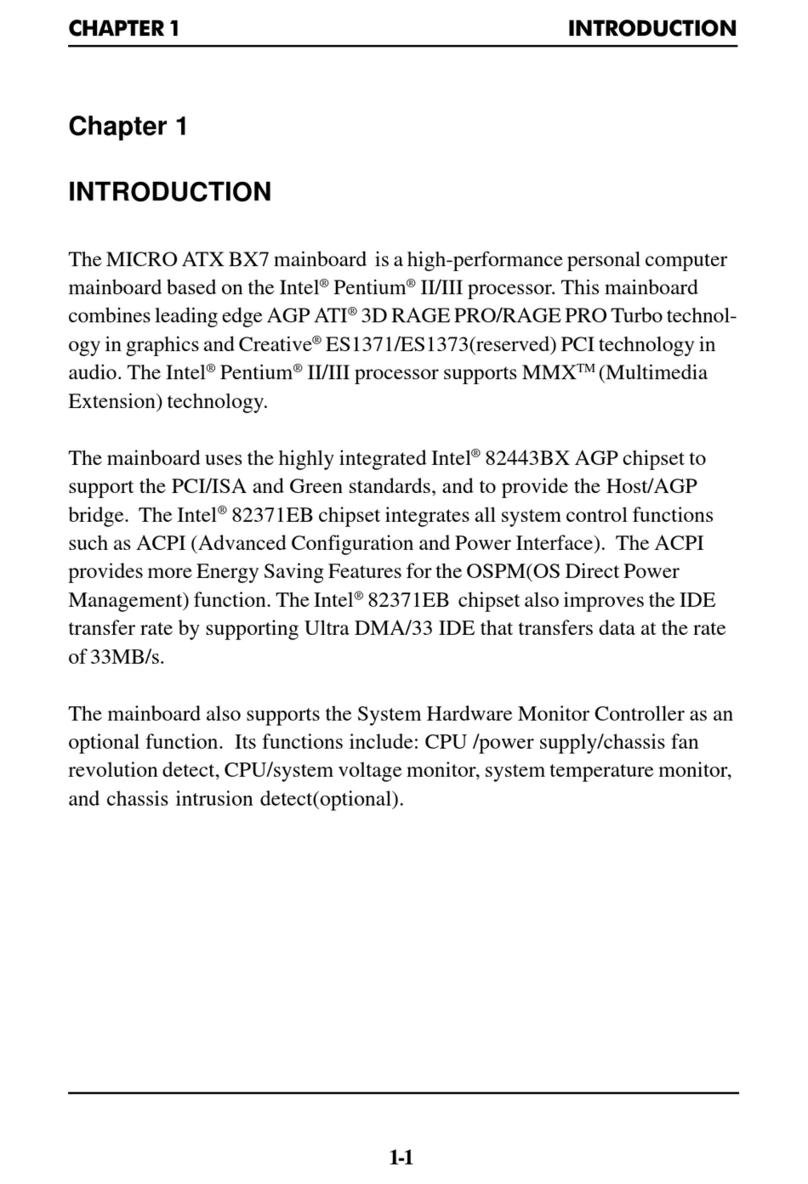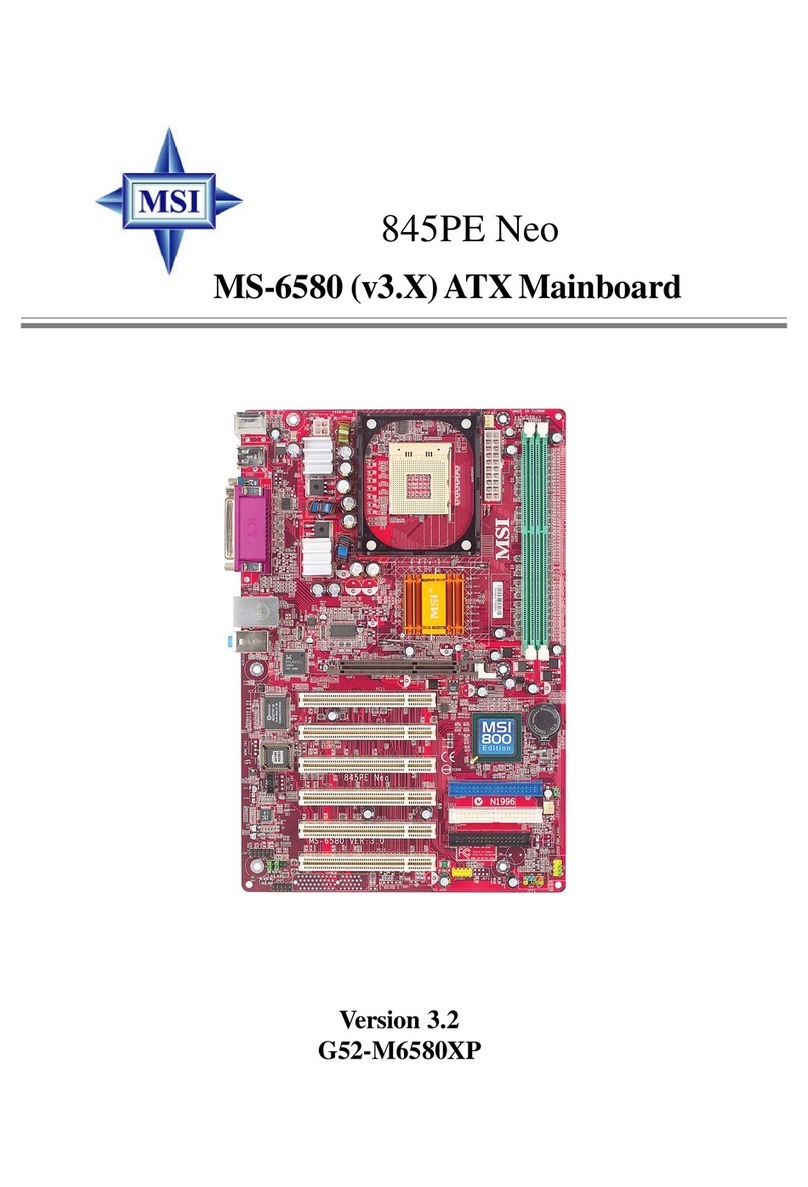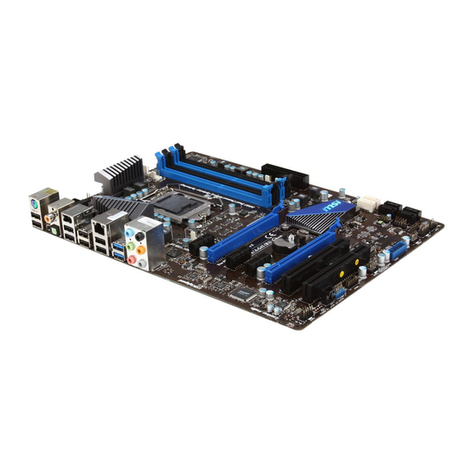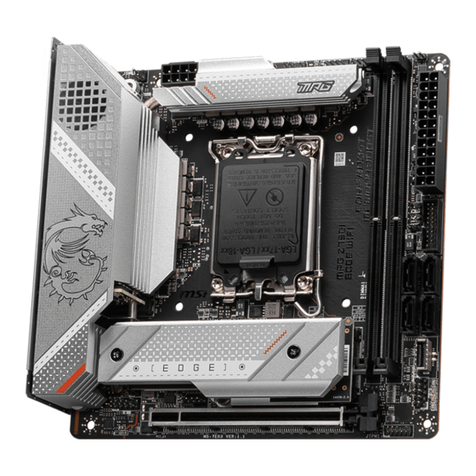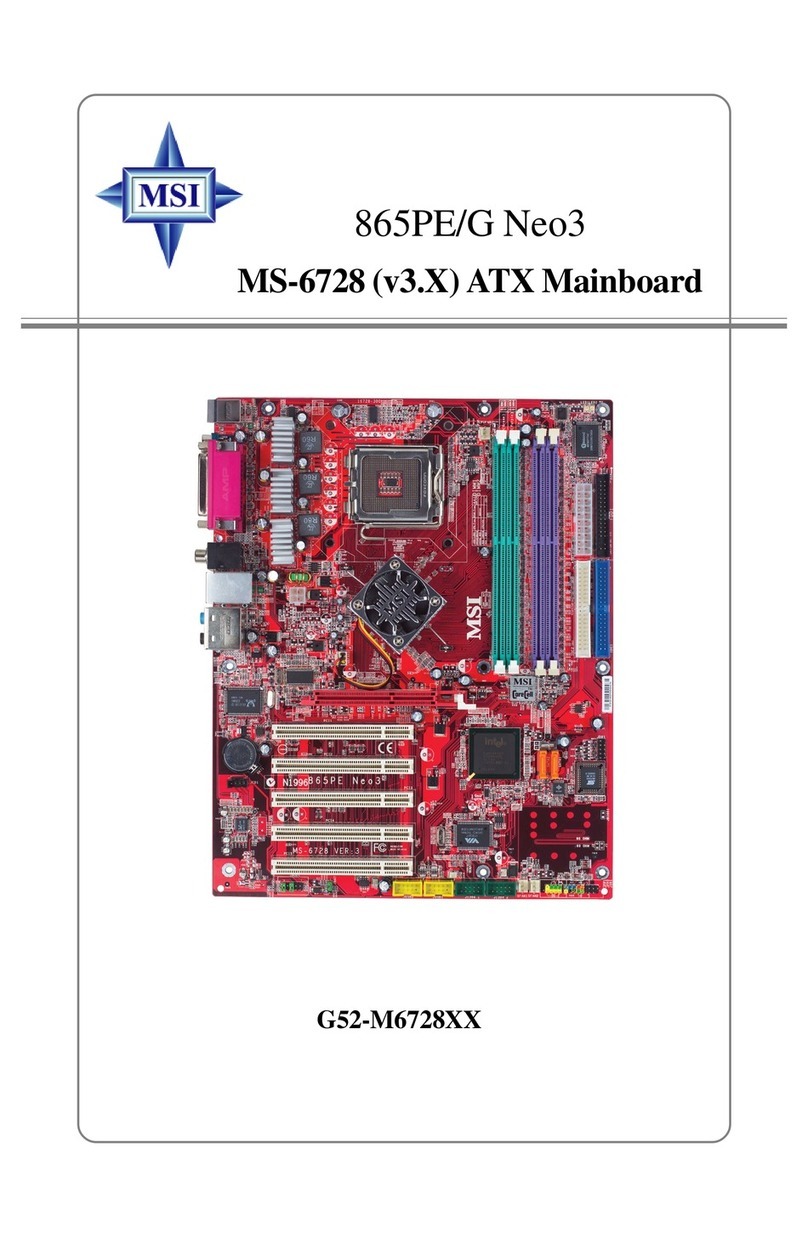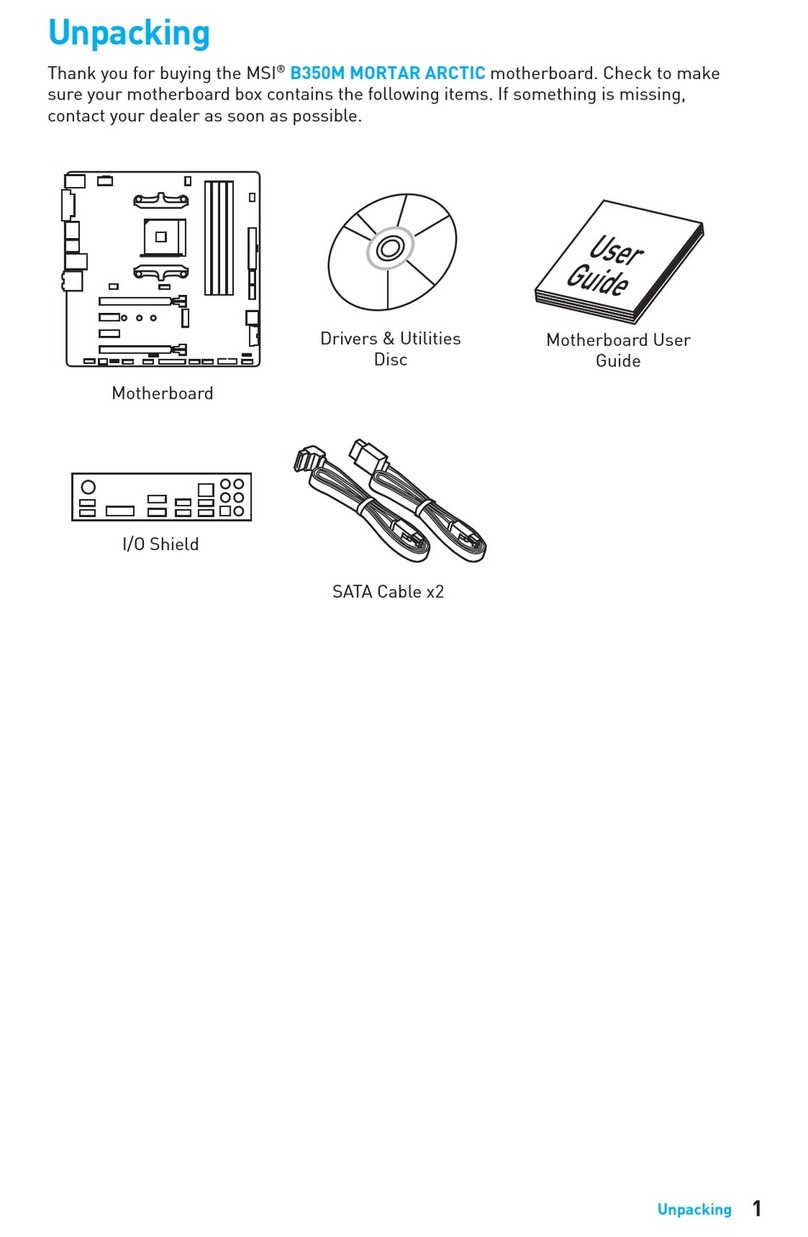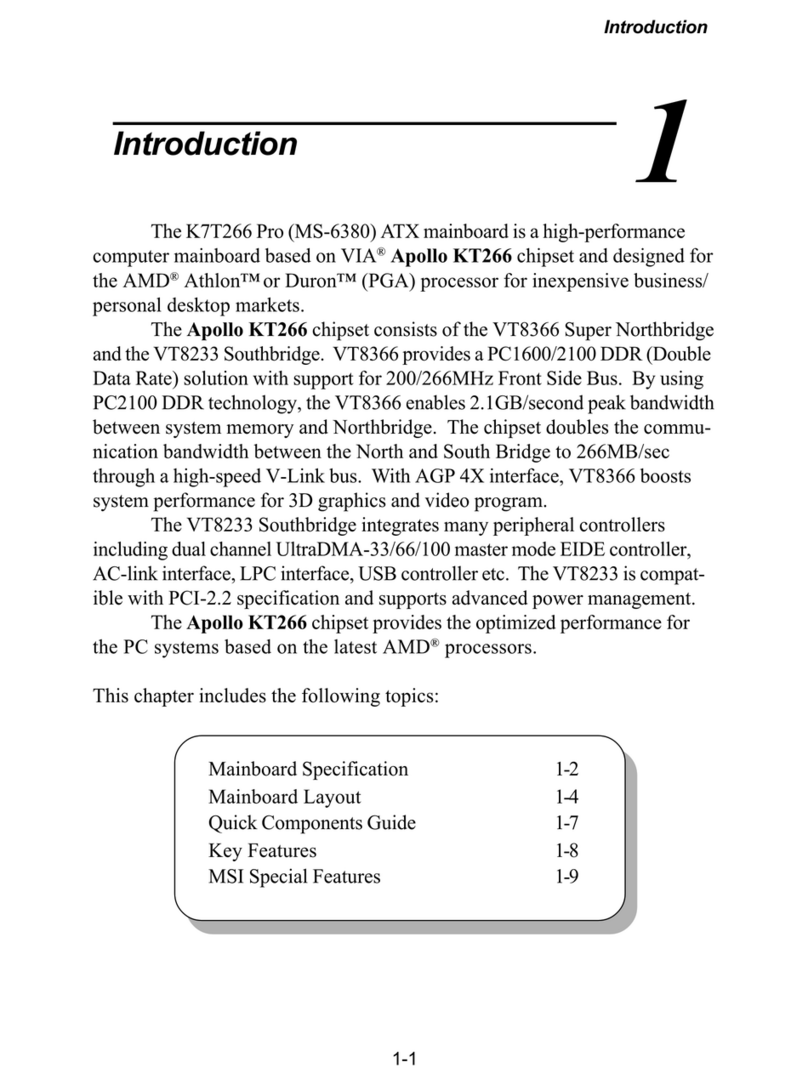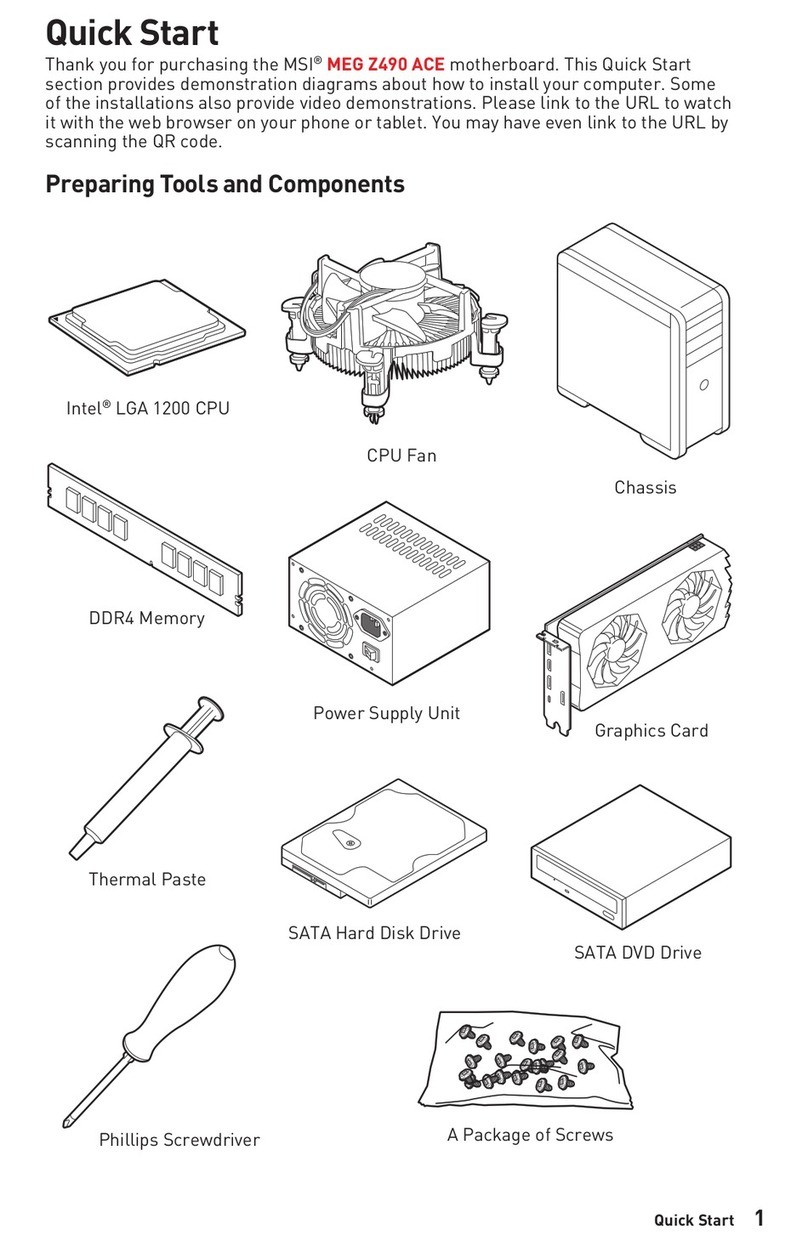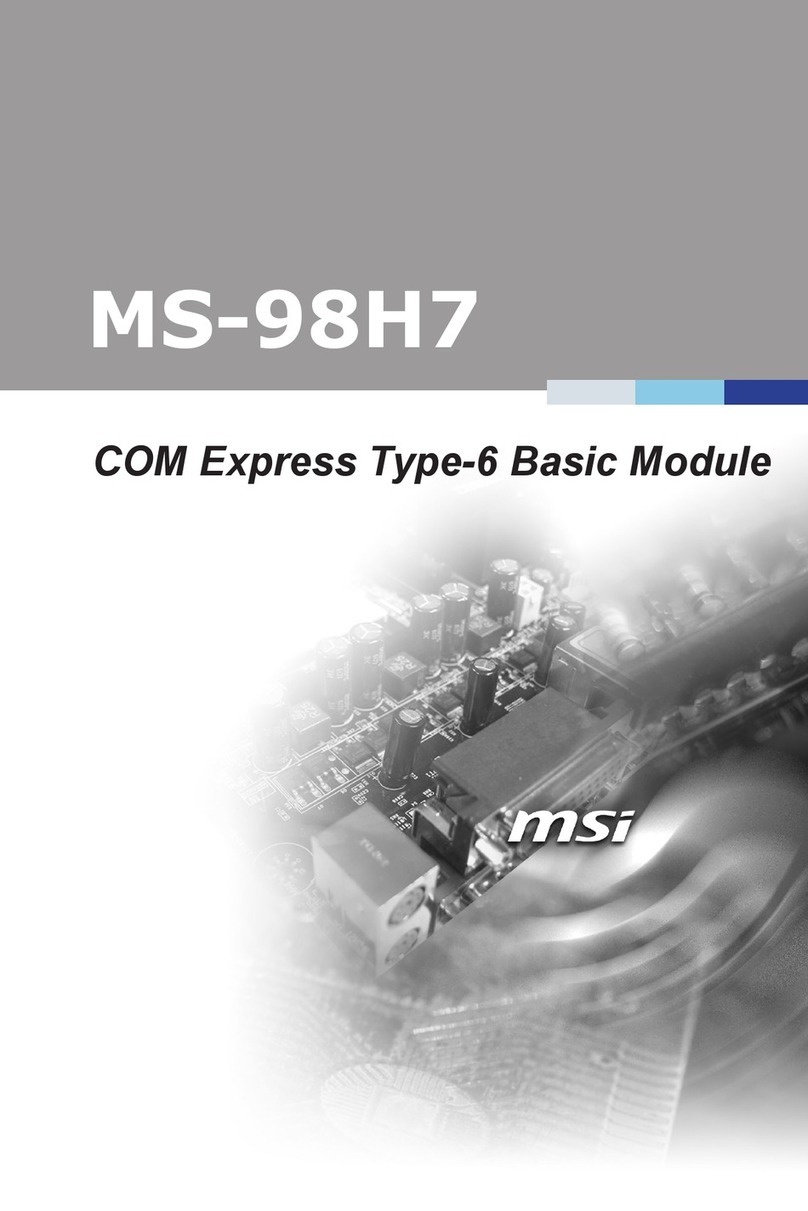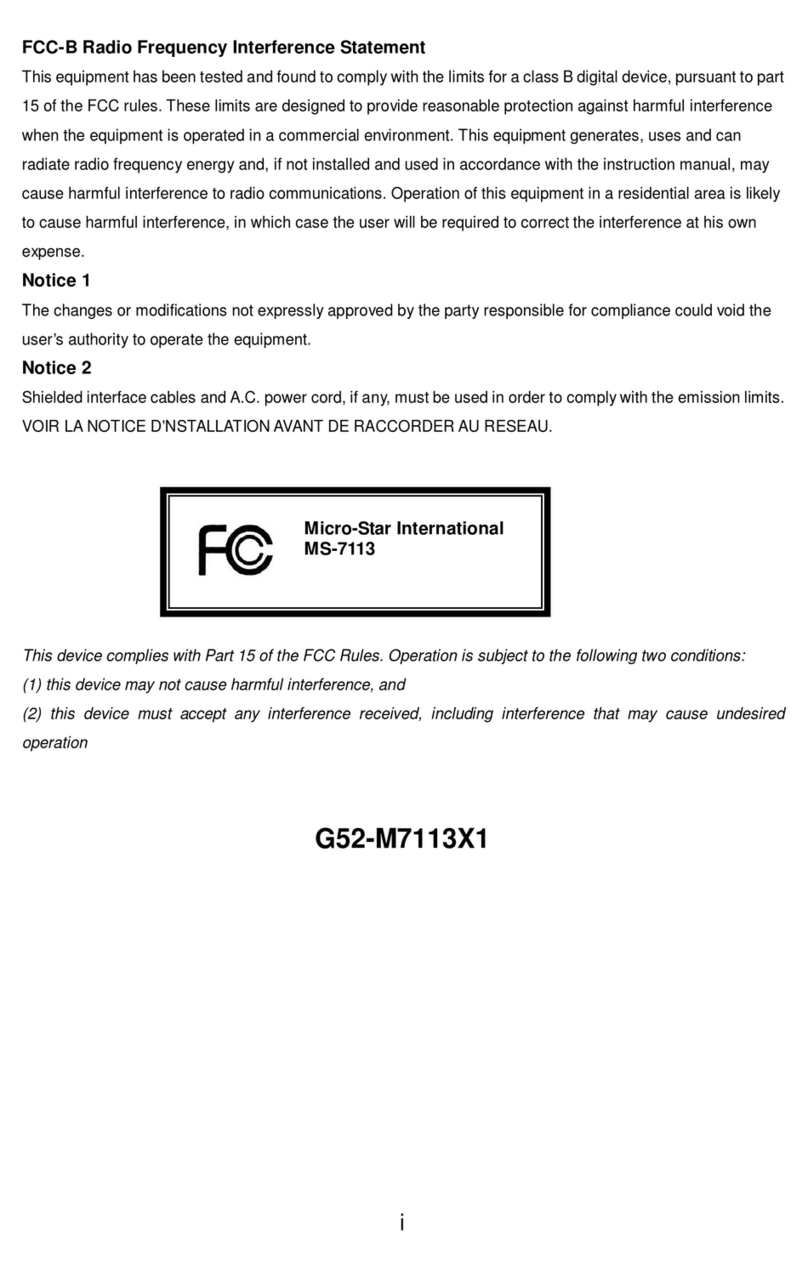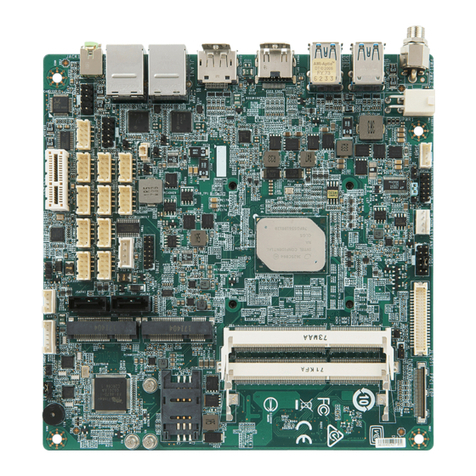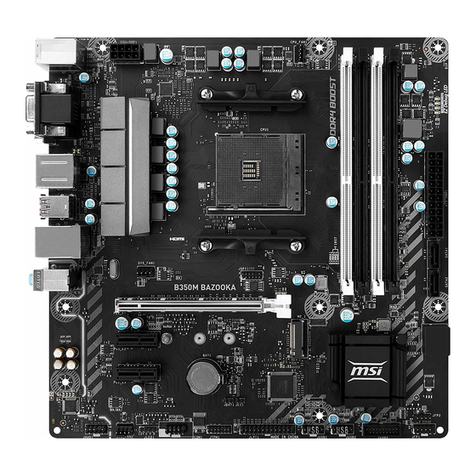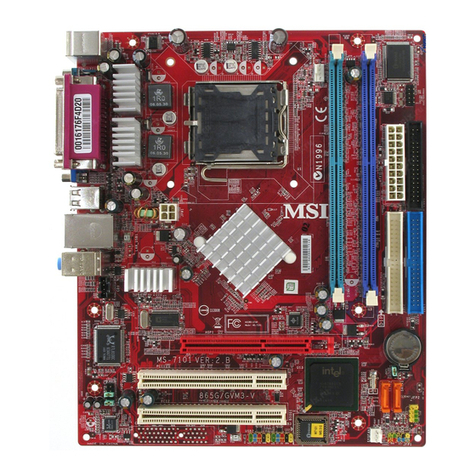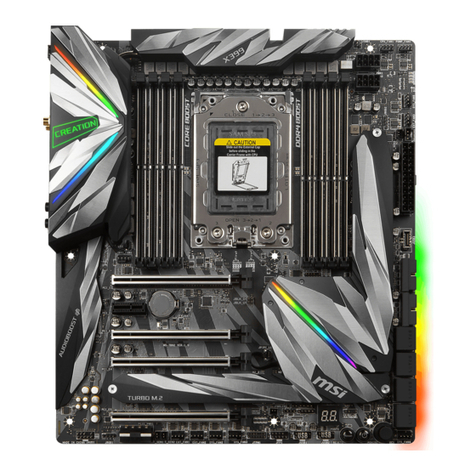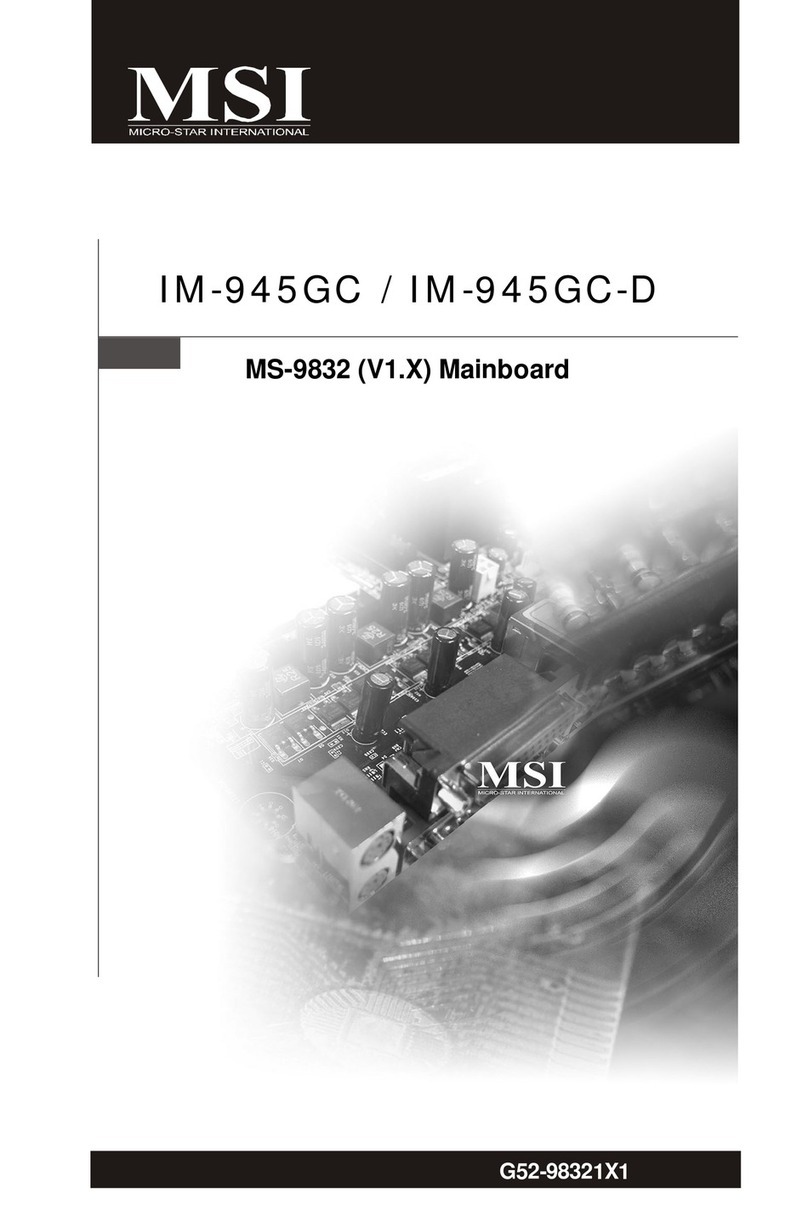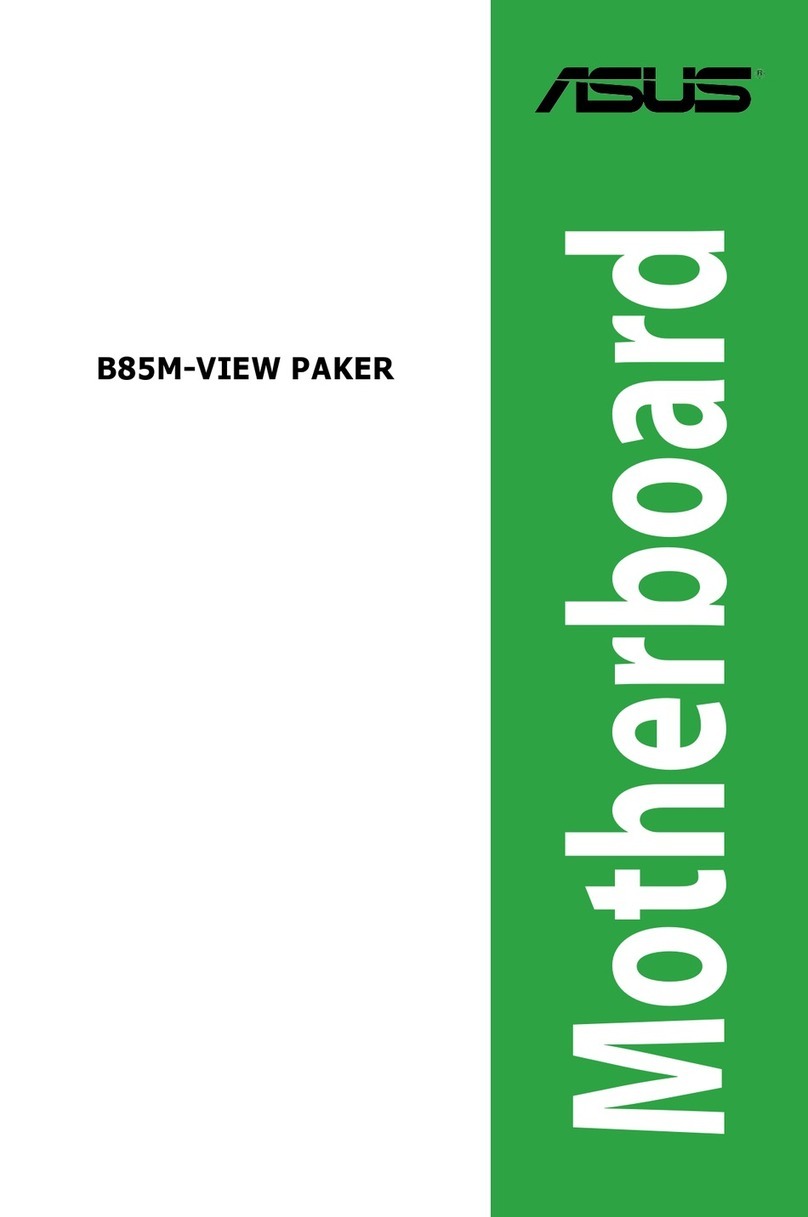vi
Floppy Disk Drive Connector: FDD1........................................... 2-12
Hard Disk Connectors: IDE1 & IDE2 ........................................... 2-13
IDERAIDConnectors:IDE3& IDE4 (K7T266 Pro2-R,K7T266Pro2-
RU) .............................................................................................. 2-14
Case Connector: JFP1.................................................................. 2-15
PowerSavingLEDConnector:JGL1 ........................................... 2-17
Wake On LAN Connector: JWOL1.............................................. 2-18
Wake On Ring Connector: JMDM1............................................. 2-18
IrDA Infrared Module Connector: J7........................................... 2-19
IDE RAID HDD LED Connector: J6 (K7T266 Pro2-R, K7T266 Pro2-
RU) .............................................................................................. 2-19
Chassis Intrusion Switch Connector: J3...................................... 2-20
CD-In/Aux Line-In/Modem-In Connector: JCD/JAUX/JMDM ... 2-21
Fan Power Connectors: CFAN1/SFAN1/PSFAN1 ....................... 2-22
Front USB Connectors: JUSB1, JUSB2 & JUSB3 ........................ 2-23
D-Bracket™ Connector: J4 .......................................................... 2-26
Jumpers .............................................................................................. 2-27
Clear CMOSJumper: JBAT1 ........................................................ 2-27
Keyboard Wake-up Jumper: JKBV1 ............................................ 2-28
Front USB Wake-up Jumper: J12 ................................................. 2-29
Slots ................................................................................................... 2-30
AGP (Accelerated Graphics Port) Slot......................................... 2-30
PCI Slots ...................................................................................... 2-30
CNR(Communication NetworkRiser) ......................................... 2-30
PCI Interrupt Request Routing .................................................... 2-31
Chapter3. AMI®BIOSSetup.................................................................. 3-1
Entering Setup......................................................................................3-2
Selecting the First Boot Device ............................................................3-2
Control Keys ........................................................................................ 3-3
Getting Help .........................................................................................3-3
